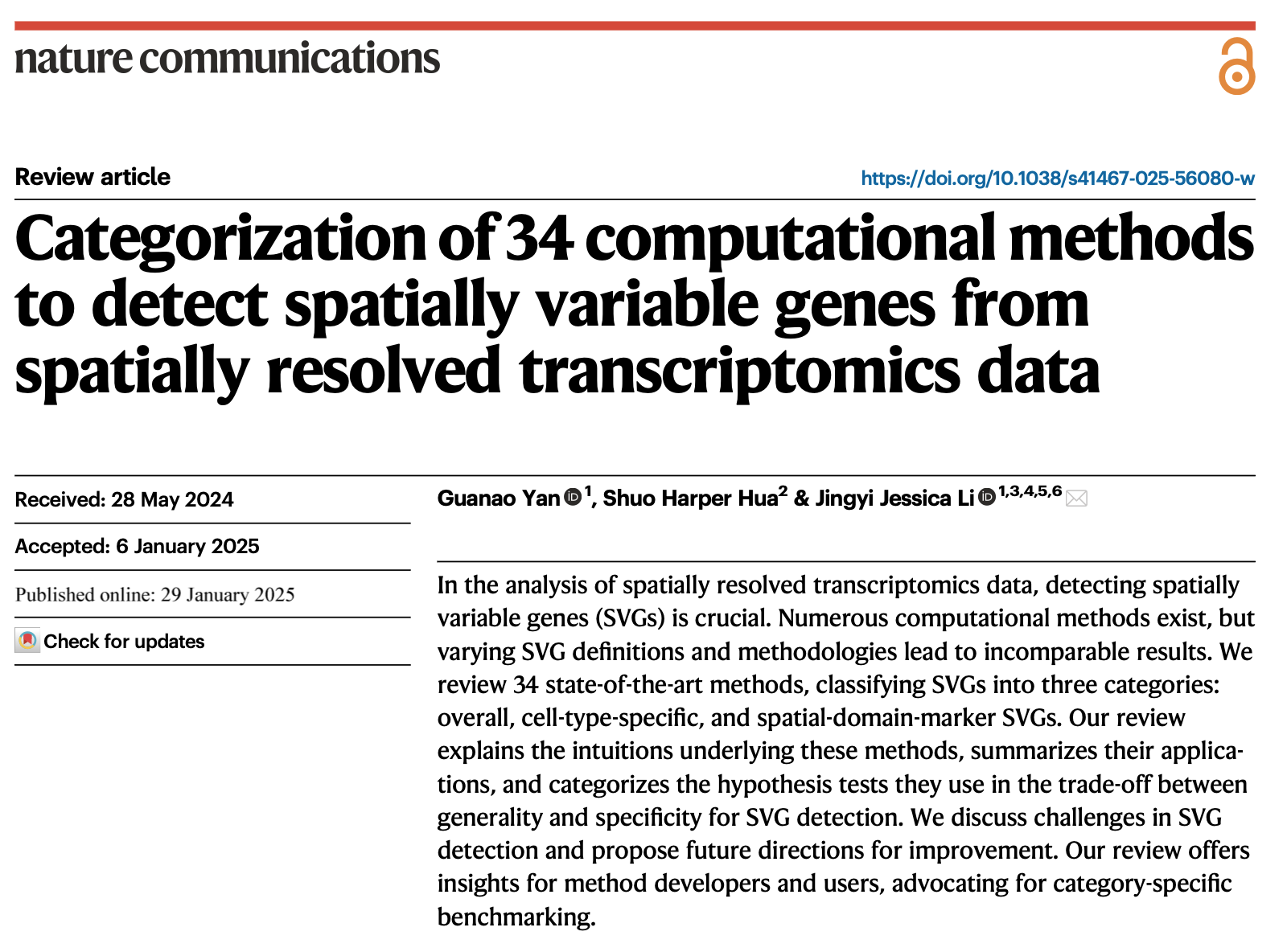We published a comprehensive review of computational methods for detecting spatially variable genes (SVGs) in spatial transcriptomics data—an essential task for understanding tissue organization and function. Despite the growing number of available methods, inconsistencies in how SVGs are defined and detected have led to results that are often difficult to compare.
In this review, we examined 34 state-of-the-art methods, classifying SVGs into three major categories:
Overall SVGs
Cell-type-specific SVGs
Spatial-domain-marker SVGs
We summarized the methodological foundations, applications, and hypothesis-testing strategies of these tools, highlighting their trade-offs between generality and specificity. The review also discusses current challenges in SVG detection and suggests future directions for improving accuracy and reproducibility.
This work aims to guide both method developers and users, and emphasizes the importance of category-specific benchmarking for rigorous and interpretable analysis in spatial transcriptomics.
